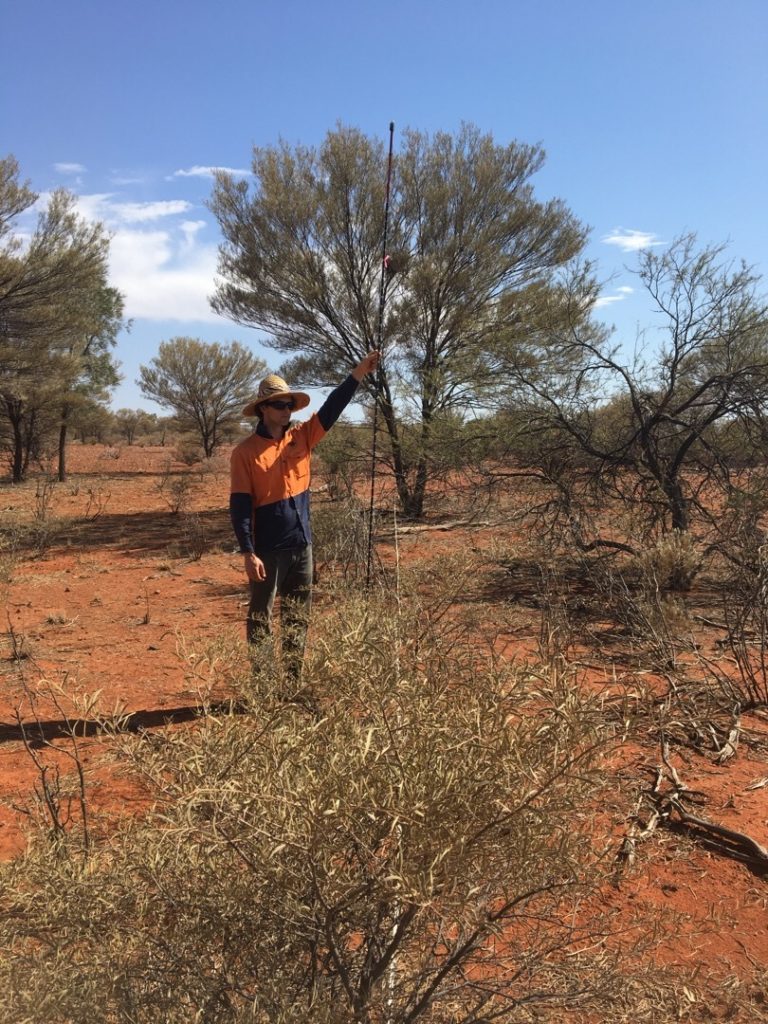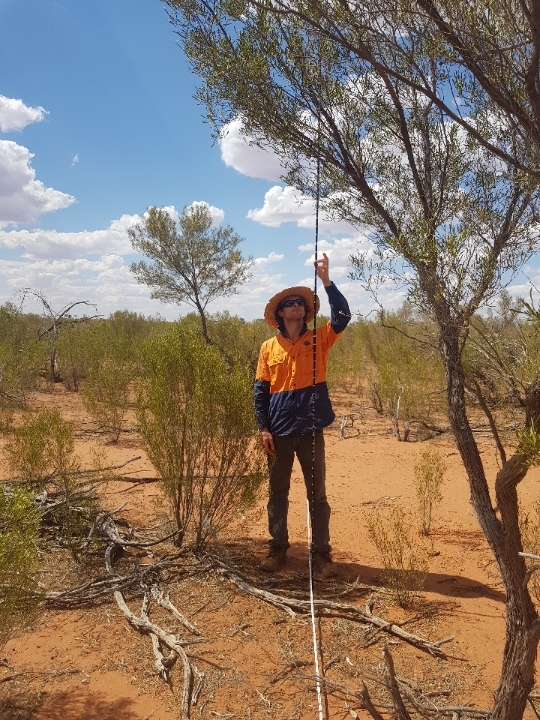Project Information
Darling River Eco Corridor 36
Human Induced Regeneration
Darling River Eco Corridor #36 is situated in Paroo River overflow country and adjoining the Ramsar listed Nocoleche Nature Reserve in north-western New South Wales. As the last free-flowing river in the Murray Darling Basin, the Paroo is home to rare fauna and flora, including water birds and Yapunyah trees.
Income for land managers in the area tends to follow boom and bust cycles, so carbon farming projects offer a reliable, steady income stream, particularly during the dry times.
The landholders on this project have chosen to work with reduced domestic stock numbers that allow them to rest portions of the country while continuing to invest in better pest control and water, fencing and firebreak maintenance. Much of the investment flows back to the local community, even in the dry times, as the landholders make a point of purchasing materials locally and are committed to using Australian-made products where possible.
The regeneration project has helped foster the abundant regrowth of native flora of the region. Along with the regeneration of mulga species and eucalypts, the landholders have noted the return of local fauna, including parrots, water birds, echidnas and reptiles.
“Our project allows us to continue providing food and fibre for domestic and export income with all its flow-on benefits,” say the landholders. “We now have three generations of our family working together, sharing experiences with youthful enthusiasm and using new technology.
“Carbon farming ticks all the boxes for land management in the western division providing landholders continue to live and work on their land. Working family farms with generations of management knowledge in remote areas, can provide the best environmental, economic and social outcomes for this country,” they say.
Key Benefits
UN Sustainable
Development Goals

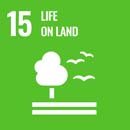
Statistics
Methodology
Human-Induced Regeneration of a Permanent Even-Aged Native Forest – 1.1 Methodology Determination 2013
Registered ID
Date registered
May 2018
Project area
22,403 ha
Permanence
25 yrs
Location
Wanaaring, NSW
This project is located West of Bourke in NSW in the Mulga Lands bioregion. The land consists of hard and sandy red soils, stony areas and floodplains. The dominant species observed on the property from field surveys include Dodonaea viscosa, Acacia aneura, Eremophila sturtii, Senna artemisioides and Eucalyptus largiflorens.
The objective of this project is to regenerate natural woodlands and shrublands. This is achieved by controlled grazing and feral animal management across the project area including fencing upgrades and water management. In addition to sequestering carbon, regeneration of native vegetation in the project area reverses land degradation caused by feral goats and livestock and stabilises soils reducing erosion.
The Project (ERF121209) was declared project under the ‘Human Induced Regeneration of a Permanent Even-Aged Forest 1.1’ methodology (2013 c3) (the Determination) and generates Australian Carbon Credit Units (ACCUs). This is the fifth version of the Human Induced Regeneration methodology.
The project has issued Kyoto ACCUs in accordance with the date the carbon sequestration occurred. Kyoto ACCUs are issued for all carbon sequestration which has occurred after 14 May 2013 and non-Kyoto ACCUs are issued for carbon sequestration that occurred prior to this date.
| Methodology Determination | Human-Induced Regeneration of a Permanent Even-Aged Native Forest – 1.1 Methodology Determination 2013 c3 |
| Project Declaration Date [1] | 25 May 2018 |
| Permanence Period | 25 years |
| Baseline Period [2]
(10 year period before project commencement) |
March 2008 – March 2018 |
| Baseline management
(Management during the Baseline Period) |
Suppression of development of forest cover through uncontrolled livestock grazing, uncontrolled feral animal populations.
Confirmed by evidence. |
| Modelling Commencement Date [3]
(Date at which sufficient regeneration had started in the CEA) |
01 September 2016, 01 July 2011
Note: the method requires there to be some vegetation present, at the modelling commencement in order to confirm that the area has the capacity to regenerate. |
| Modelling Tool | FullCAM 2016 |
| Audit | There has been 1 audit undertaken by registered Greenhouse and Energy Auditors which have confirmed the project complies with the Methodology Determination and the requirements of the CFI Act in all material respects for the periods audited. The most recent audit report was issued on the 30 January 2019. |
HIR project Carbon Estimation Areas
What are Carbon Estimation Areas?
A CEA is an area of land within a project area where the project activity or activities are being carried out to sequester carbon (for example, the cessation of mechanical or chemical clearing or management of timing and extent of grazing to enable regeneration of vegetation to forest) and for which ACCUs can be credited[4].
These are the areas where project activities occur and where carbon abatement will be modelled applying standardised estimation formulae approved by the Clean Energy Regulator. There can be one or many CEAs on a Project Area.
Each CEA must contain areas of eligible land greater than 0.2ha in size in which the project activities are implemented and which have started to become native forest through regeneration.
- Eligible Land is land that didn’t have forest cover during the baseline period (ie. the 10 years before project commencement) and which has been used or managed in a way that suppresses development of forest cover.
- A particular area of land has Forest cover if the land has an area of at least 0.2 of a hectare and has trees that are 2 metres or more in height and provide crown cover of at least 20% of the land.
Stratification of Darling River Eco Corridor 36 HIR Project Area into CEAs
Stratification is the process of “demarcating the boundaries of CEAs from ineligible and non-implementation areas within a project area”[5].
There are Guidelines setting out how Project Areas are stratified into CEAs. These include rules about evidence, stratification and record keeping to support the requirements in the CFI Rule 2015 (2018 and 2019 Amendments) including key method eligibility requirements.
Stratification of the Darling River Eco Corridor 36 HIR Project was carried out in accordance with the Determination and first reported to the Clean Energy Regulator for a reporting period ending 30 November 2018.[6].
A summary of the stratification of the Darling River Eco Corridor 36 HIR Project is set out below:
| Project Area | 57,241 hectares |
| Number of Carbon Estimation Areas (CEA) [7] | 82 |
| Total Carbon Estimation Areas (CEA)Size | 22,403 hectares |
| Total area excluded from CEA | 34,838 hectares |
| Excluded from CEA –
Pre-existing forest cover (forest present at any time during the baseline period) |
6,290 hectares |
| Excluded from CEA
No forest potential (areas of land that do not meet the requirements of forest potential) |
13,581 hectares |
| Excluded from CEA
Non-project area (areas of land that are within the project area but excluded for other reason e.g. infrastructure or areas excluded for production purposes) |
14,967 hectares |
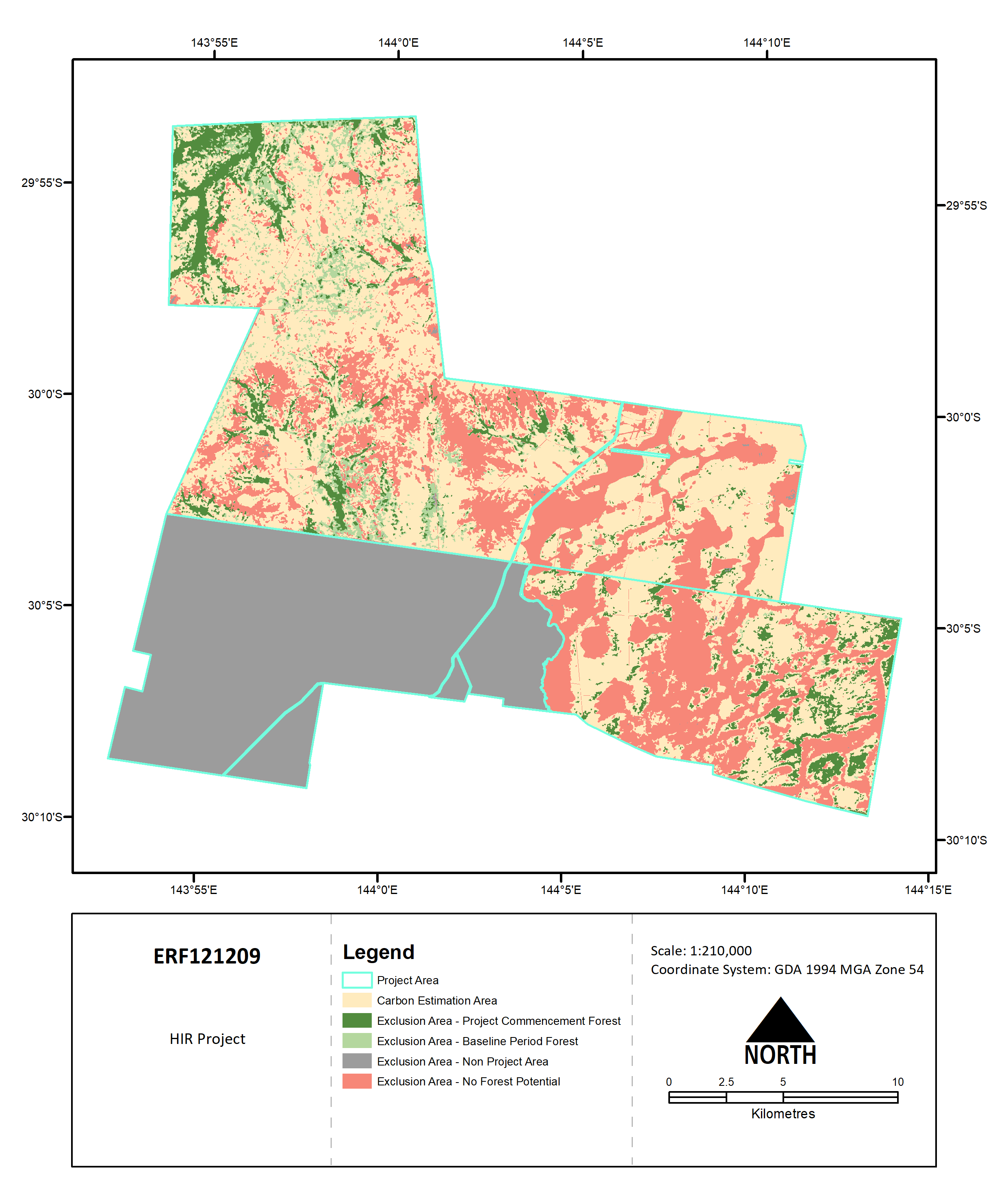
This map shows the project area boundary and the different elements of project design including the carbon estimation areas and exclusion areas. This stratification may reflect both initial stratification and subsequent revisions.
In order to validate the stratification of the Darling River Eco Corridor 36 HIR project in accordance with the Determination and Guidelines, GreenCollar carried out extensive field surveys and data collection. This included collection of data on existing vegetation species, stem density and vegetation height.
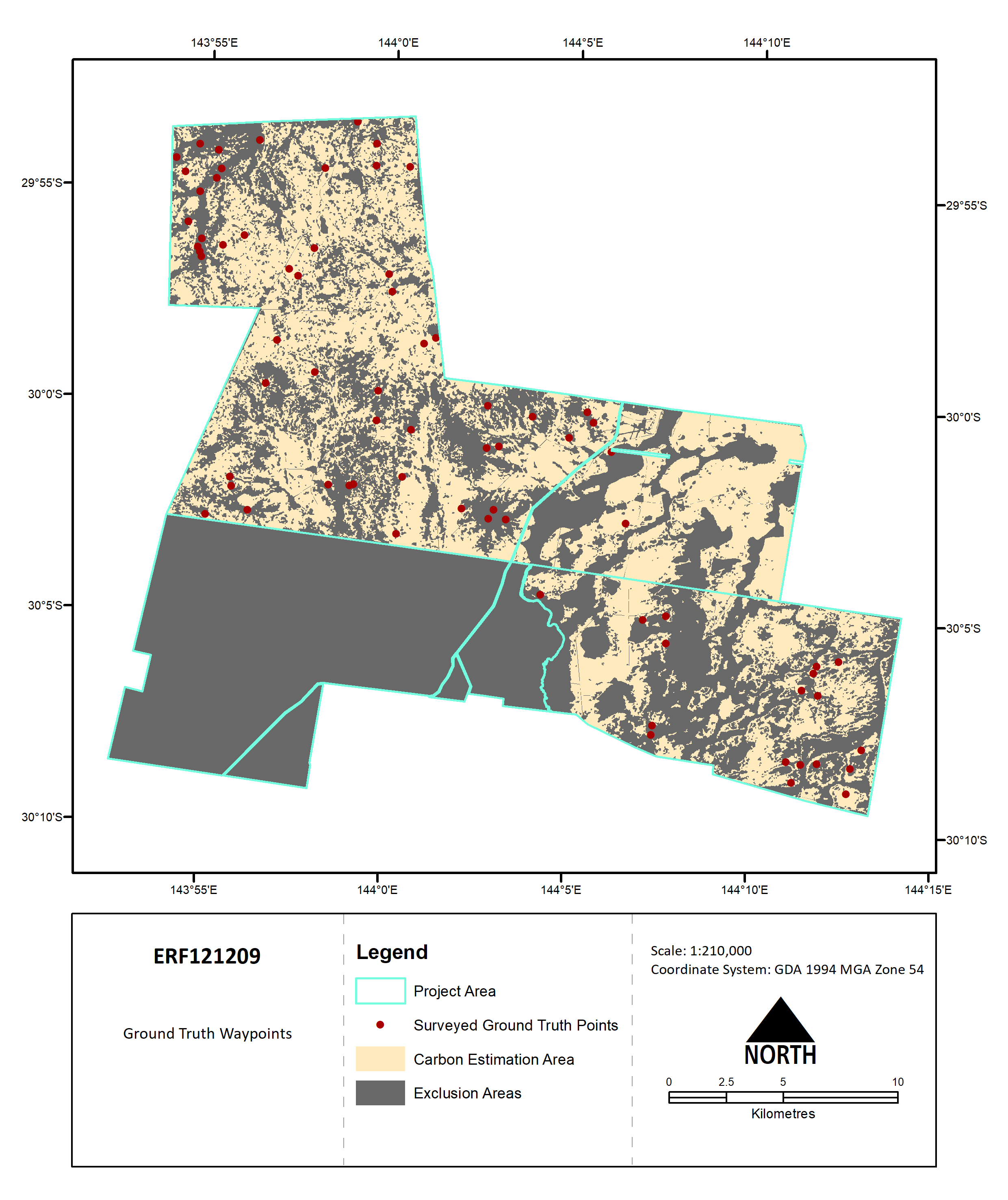
This map shows the points within the project area where vegetation biomass surveys were conducted as part of the monitoring process.
A Biomass Waypoint is a randomly allocated point within the project area where sampling data is collected.
The Guidelines also require a map accuracy assessment be completed before offset reporting. This assessment must include the field sample plots, which can be used in conjunction with remote sensing samples. The Clean Energy Regulator will accept mapping accuracies at or above 85 per cent for pre-existing forest and forest potential classification types. The overall accuracy of the Darling River Eco Corridor 36 classification was 86.76% which is greater than the 85% minimum requirement of The Guidelines.
After the completion of the map accuracy assessment, any additional exclusion areas were delineated prior to finalising the initial stratification. The extent of exclusion areas (totalling 34,838 ha), comprised of pre-existing forest cover (6,290 ha) and areas which classified as having no forest potential (13,581 ha). Through this process a final eligible CEA area of 22,403 ha was confirmed.
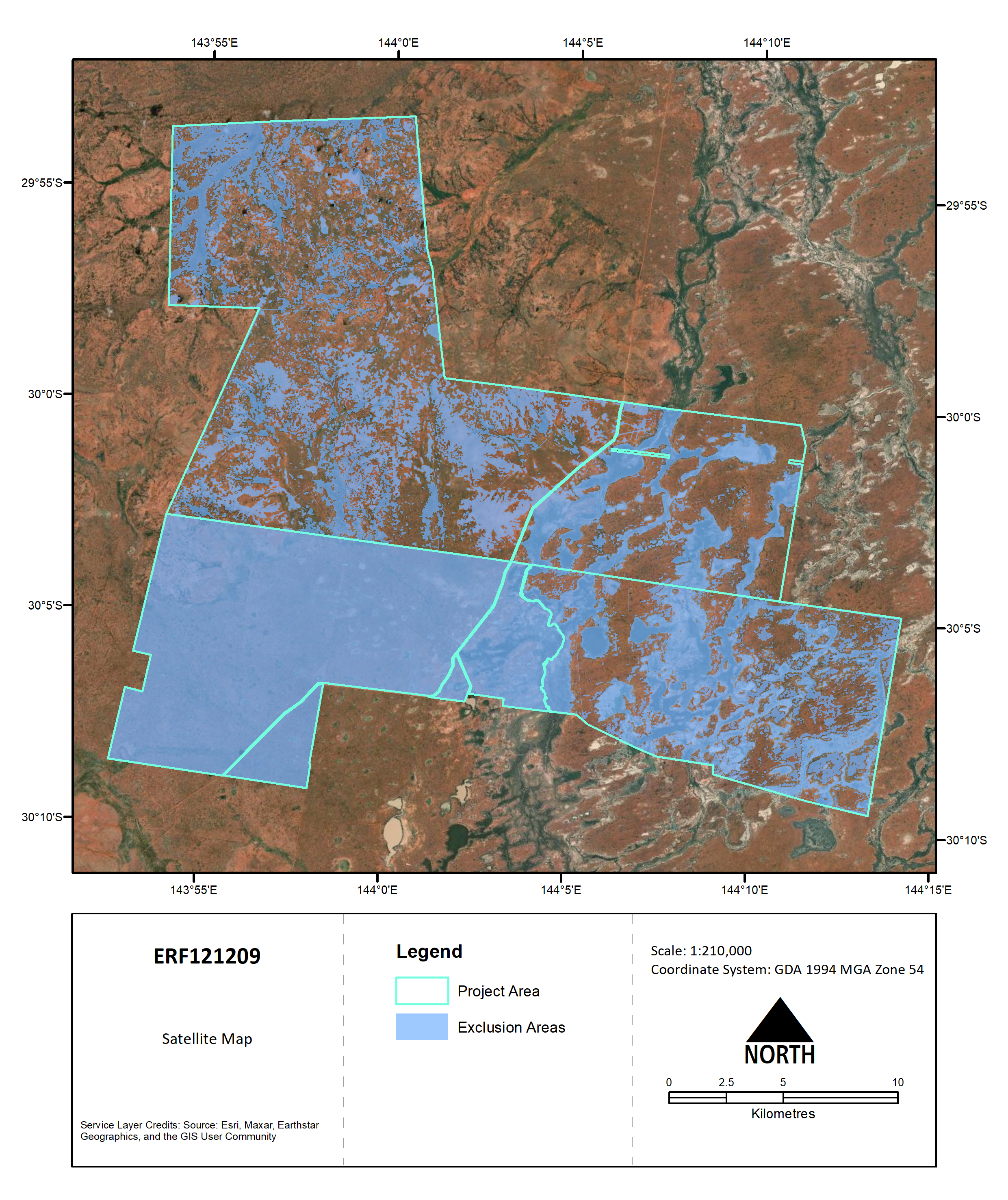
This maps shows a current satellite image of the project area. Satellite imagery and remote sensing datasets were used to identify eligible land and exclusion areas.

This map shows a summary of all CEA and Exclusion Areas.
Project Sequestration and Abatement
This version of the HIR Methodology requires using the Full Carbon Accounting Model (FullCAM) to determine the sequestration of carbon stocks and emissions required to calculate the net abatement amount for each reporting period. The carbon dioxide equivalent net abatement amount in relation to a reporting period for the project is taken to be the change in carbon stock for the project area less the project emissions. Any carbon stock that accumulated by the crediting start date for the project is calculated as the initial carbon stock and is removed from the calculation of abatement as the proponent is not entitled to credits for it.
See below for the average per hectare sequestration for the Darling River Eco Corridor 36 HIR project.

Implementation & Monitoring
The activities for the project are:
- the management of the timing & extent of grazing, and
- the management, in a humane way, of feral animals
Since project commencement these activities have been undertaken across the project area to assist the regeneration of native forest in attaining forest cover. Once the initial offsets report has been completed, GreenCollar works closely with the landholder of the project property to collect land management information every quarter. This is reviewed and reported on in each offsets report.
A summary of monitoring activities and evidence collection undertaken on this project is set out below:
- Evidence collection in relation to grazing and herd management
- Evidence collection in relation to removal and reduction of feral animals
- Evidence of fire management activities
- Evidence collection from landholder as to other land management activities as relevant
- Change detection assessments
- Repeat biomass inventory surveys to track biomass change of regenerating vegetation
- Daily fire hotspot monitoring and review of Seasonal Fire Risk
- Review of SPEI drought index
- Regeneration Gateway Checks
These surveys are currently not required under the HIR method but are implemented by GreenCollar to provide additional assurance that biophysical threats to carbon stores such as grazing, drought and fire are not negatively impacting the regeneration and to track progress of regeneration of the native forest. In addition, the data collected is utilised for broader research purposes.
Regeneration Checks
The Guidelines require that Proponents must provide regeneration checks at least once every five years from the start of the project’s last or only crediting period until CEAs pass their forest cover assessment date[7], and upon request by the Clean Energy Regulator.
A summary of regeneration checks required for the Darling River Eco Corridor 36 HIR Project is set out below:
| Regeneration Check: Year 6
7.5% canopy cover at 100ha scale[8] |
25 May 2023 |
| Regeneration Check: Year 10
10% canopy cover at 10ha scale[9] |
25 May 2027 |
| Forest Cover Assessment Date [10] | 25 May 2023 |
The process and methodology includes one or more of the three evidence requirements and reporting:
- Evidence level 1: Change detection analysis, or
- Evidence level 2: Remote sensing analysis and/or
- Evidence level 3: Field data; and
- Reporting
Project Area Files
GIS shapefiles for the project can be downloaded here. These files detail the project stratification including the carbon estimation areas and exclusion areas.
[1] Carbon Credits (Carbon Farming Initiative) Act 2011 Section 27
[2] Carbon Credits (Carbon Farming Initiative) (Human-Induced Regeneration of a Permanent Even-Aged Native Forest—1.1) Methodology Determination 2013 c3 Section 4
[3] Carbon Credits (Carbon Farming Initiative) (Human-Induced Regeneration of a Permanent Even-Aged Native Forest—1.1) Methodology Determination 2013 c3 Section 28
[4] Guidelines on evidence, stratification and records 8 May 2019
[5] Guidelines on evidence, stratification and records 8 May 2019
[6] The initial stratification was reported on prior to the public release of the Guidelines on stratification, evidence and records in May 2019. These guidelines also set out administrative arrangements for projects that have previously reported, including a pragmatic approach that will be taken in situations where additional evidence is required to meet these guidelines. Additionally, the project is defined as an existing project in accordance with Section 9AA of the CFI Rule 2015.
[7] Forest cover assessment date has the same meaning as that given by section 9AA(6) of the CFI Rule.
[8] Guidelines on evidence, stratification and records 8 May 2019
[9] Guidelines on evidence, stratification and records 8 May 2019
[10] Carbon Credits (Carbon Farming Initiative) Rule 2015 Section 9AA(6)

